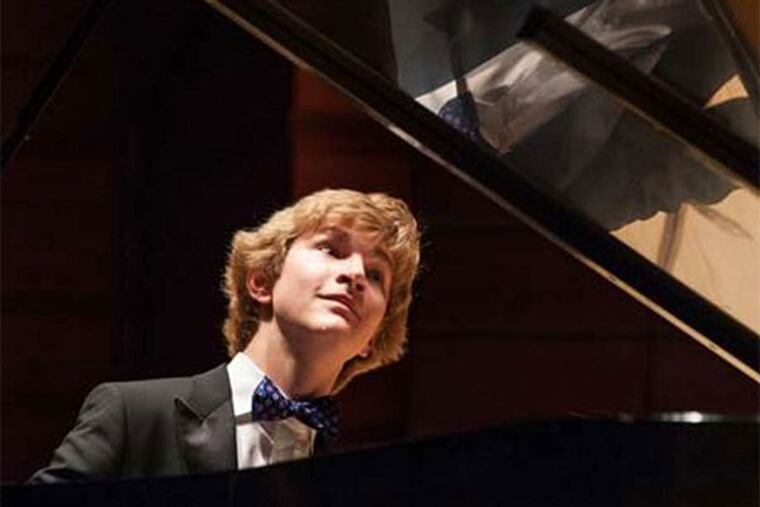Stop and go with Mozart
Nézet-Séguin pulls back, jumps forward; pianist Lisiecki proves interesting.

For the opening salvo of four different Mozart programs in three days, conductor Yannick Nézet-Séguin on Thursday night modulated his influence to various degrees. His jumpiness in the Overture to Così fan tutte left you wondering what happened to the gracefully rounded waves of Mozart's main theme. In parts of a symphony, he stepped back and let it flow. Presiding over a piano concerto, he left a personal stamp.
By the end of this weekend of overtures, symphonies, and piano concertos - so much for new formats - listeners should have a firm idea of whether this Philadelphia Orchestra music director has any firm ideas about Mozart.
The headline from the first installment is that Nézet-Séguin will move through a score on autopilot for a while, but at certain points change the speed and character of the music. Two scaled-down ensembles are splitting the schedule of concerts; Thursday night's hugged his every nuance.
This phrase-sculpting expressed no big ideas. At a point in the first movement of Mozart's Symphony No. 39, Nézet-Séguin stopped keeping time, then turned to the cellos to propel a rhythm forward. Elsewhere, he bunched up tension for a stretch, then relaxed. These are more pleasant topographical alterations than revelations, but they make for great visuals. In a third movement of machinelike inevitability, he was a conductor for the eyes.
The Piano Concerto No. 22 in E flat (K. 482) lends itself to personal statements by the orchestra and conductor, with its contrasting movements within movements, and, joined by 19-year-old soloist Jan Lisiecki, it ended up an interesting, if slightly odd, compendium of philosophies. At this stage in his development, Lisiecki is a pretty player who, in real time, can be heard still searching for meaning. The cadenza work was genuinely probing, the passagework more prosaic. Nézet-Séguin made the most of the middle movement's astonishing shifts from opening despondency to joie de vivre winds, and back again.
215-854-5611